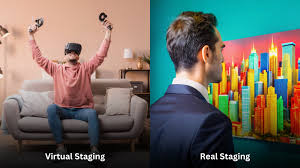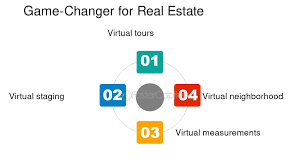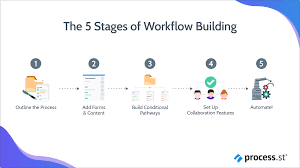Now Reading: Sell Homes Faster: How Virtual Tours and AR Are Game-Changers 2025
-
01
Sell Homes Faster: How Virtual Tours and AR Are Game-Changers 2025
Sell Homes Faster: How Virtual Tours and AR Are Game-Changers 2025

In the fast-changing world of real estate, technology is becoming a powerful tool for agents, homeowners, and buyers alike. Among the most exciting developments are virtual tours and augmented reality (AR) staging, which are transforming how homes are showcased and sold. These digital tools are making home buying easier, faster, and more engaging—especially in today’s competitive market.
Let’s explore how these technologies work, why they matter, and what the future holds for selling homes in the digital age.
What Are Virtual Tours and AR Staging?

Virtual tours allow potential buyers to explore a home from the comfort of their own device—whether it’s a smartphone, tablet, or computer. These tours provide a 360-degree walkthrough, letting users look around each room, zoom in on details, and move from one space to another as if they were physically there.
AR staging, on the other hand, uses augmented reality to add virtual furniture, decor, and design elements to an empty or existing room. This helps buyers visualize how a space can be used or personalized, even if it’s currently vacant or outdated.
Together, these tools create a realistic and interactive experience that traditional photos and open houses can’t match.
Why Virtual Tours and AR Staging Are Game-Changers

1. Convenience for Buyers and Sellers
Buyers no longer need to attend dozens of open houses. With virtual tours, they can “visit” multiple homes online in minutes. Sellers, meanwhile, avoid the stress of constant showings and last-minute cleaning.
2. Wider Reach
Homes with virtual tours get more attention online. These listings often appear higher in search results and keep viewers engaged longer. That means more eyes on a property and potentially more offers.
3. Better Visualization
Many people struggle to imagine how an empty room could look with furniture. AR staging solves this problem by placing stylish, realistic pieces into the space. It also allows users to try different layouts, colors, and styles instantly.
4. Saves Time and Money
Staging a home with real furniture can be expensive and time-consuming. AR staging offers a much cheaper, faster alternative with stunning results. Plus, virtual tours reduce the need for frequent in-person visits, saving time for agents and buyers alike.
5. Useful for Long-Distance Buyers
Out-of-town buyers can view properties remotely and make informed decisions without traveling. This is especially important for investors or people relocating for work.
How It Works: A Step-by-Step Guide

- Capturing the Space
A photographer or real estate agent uses a 360-degree camera to capture high-resolution images of each room. These images are then stitched together to create a seamless virtual tour. - Creating the Tour
Special software is used to build the tour. Features may include clickable navigation, floor plans, and voiceovers. - Adding AR Staging
Using apps or design platforms, digital furniture and décor are placed into the virtual space. The staging can be customized for different buyer tastes or design trends. - Sharing the Experience
The final product is uploaded to listing sites, social media, and email campaigns. Buyers can click a link to explore the home anytime, anywhere.
Success Stories from the Market
Real estate professionals are already seeing huge benefits from adopting these tools.
Jessica Martin, a real estate agent in Austin, Texas, shared how she sold a $600,000 home within a week using virtual tours and AR staging. “The buyers lived out of state and said the virtual experience made them feel like they were really inside the house,” she said.
RE/MAX and Zillow are also integrating AR and VR (virtual reality) technologies into their platforms. According to Zillow, listings with virtual tours get 50% more views and 22% more shares on average.
Tools and Platforms Leading the Way
Some of the most popular tools for virtual tours and AR staging include:
- Matterport – Known for its realistic, immersive 3D tours.
- BoxBrownie – Offers affordable virtual staging and photo editing.
- Zillow 3D Home – Easy-to-use app for creating simple virtual tours.
- RoOomy – Allows interior designers and agents to create AR-staged rooms.
- Augment and Houzz – AR tools focused on home design and remodeling.
These tools are becoming more user-friendly and affordable, even for independent agents or homeowners looking to DIY.
The Future: What’s Next in Digital Real Estate?
As technology continues to evolve, expect even more innovations:
- Virtual Reality (VR) Home Shopping – Full VR headsets could provide an even more lifelike experience.
- AI-Powered Staging Suggestions – Software could analyze buyer behavior and suggest staging based on personal preferences.
- Interactive Smart Home Features – Buyers might soon be able to “test” smart lights, thermostats, and appliances during a virtual tour.
Final Thoughts: Embrace the Change
Virtual tours and AR staging are no longer just “nice to have”—they’re becoming must-haves in modern real estate marketing. For agents, embracing these technologies means staying competitive and closing deals faster. For buyers, it means a more convenient and immersive shopping experience.
Read More:- Shobha Realty Launches Its Most Luxurious Project Yet—Full Details Inside 2025






















